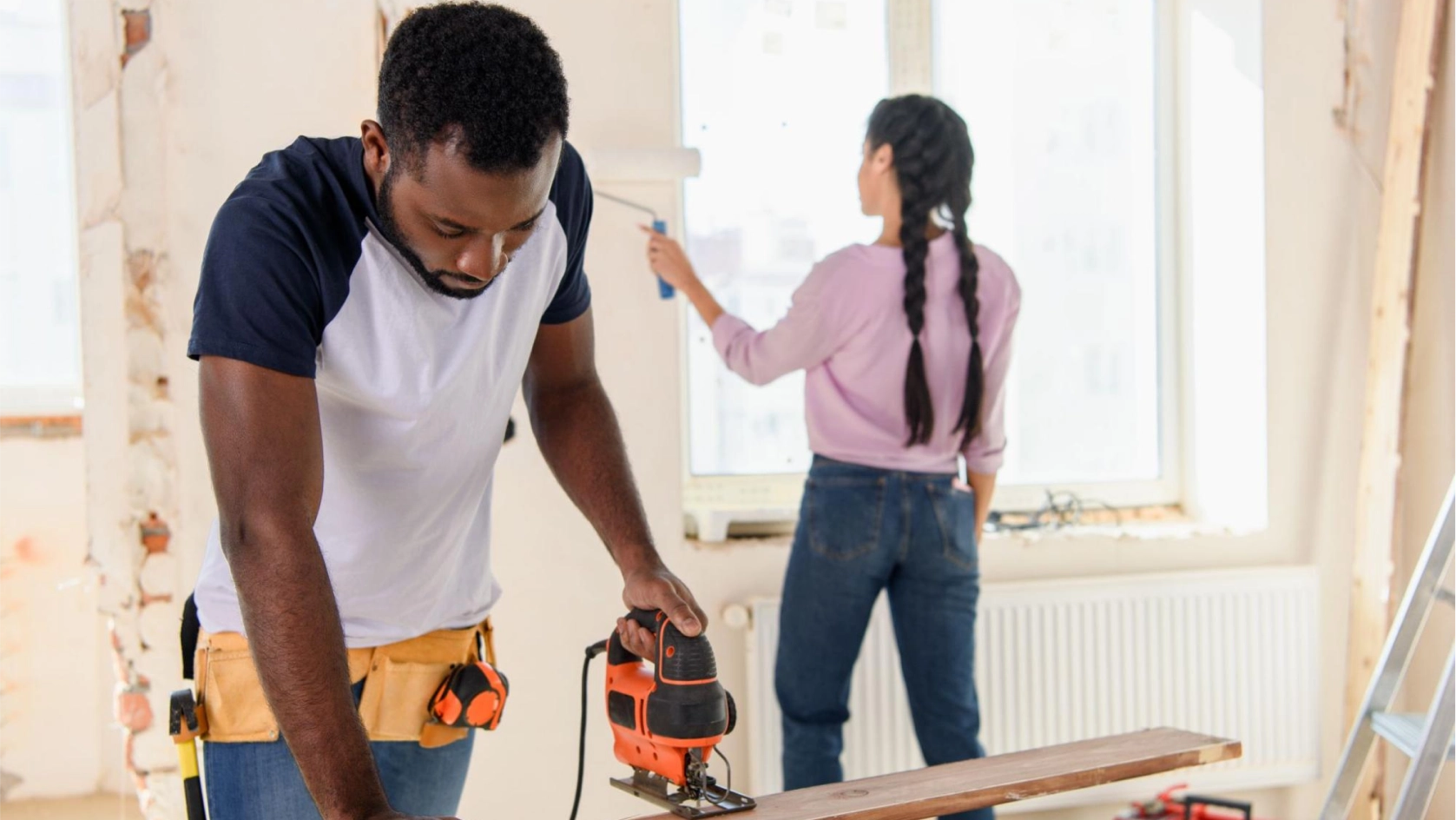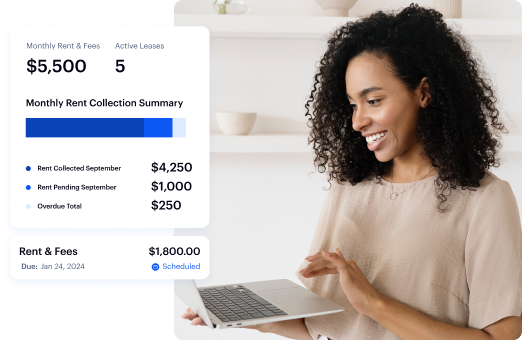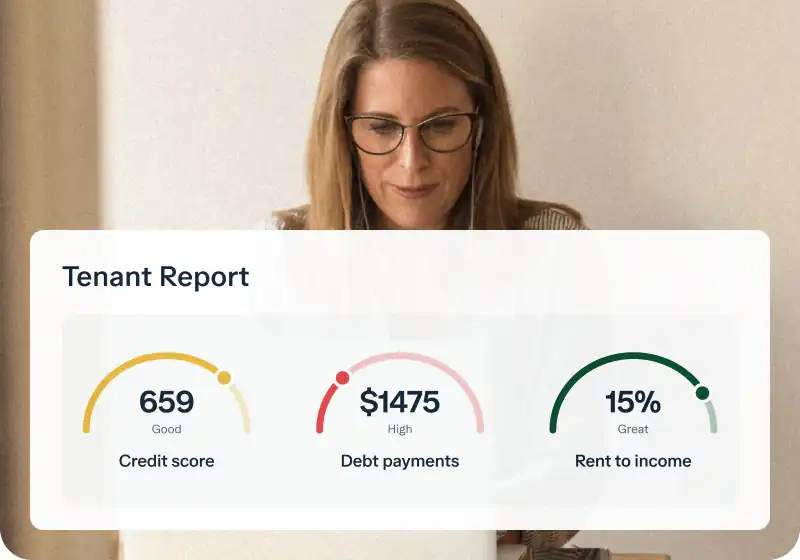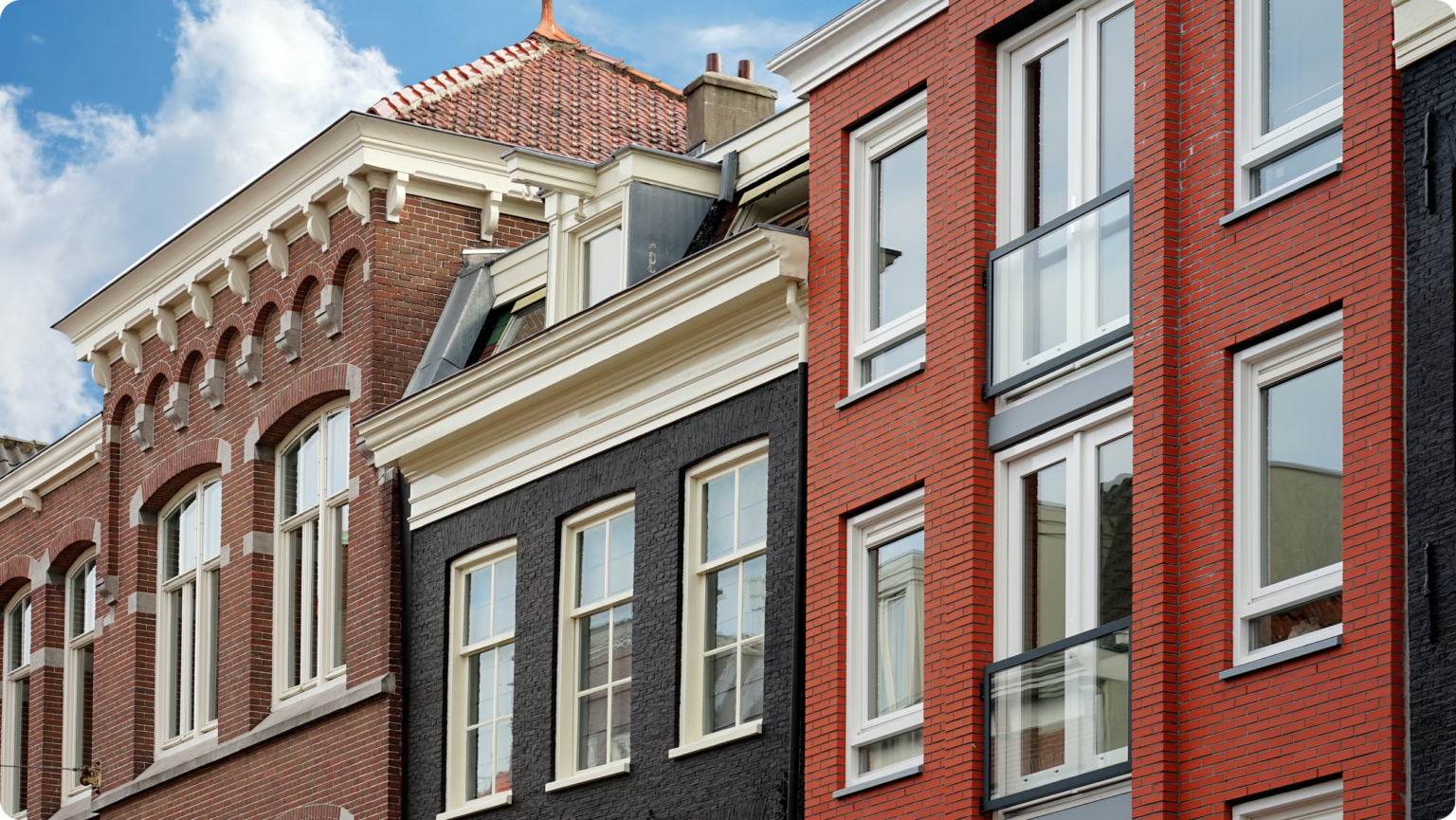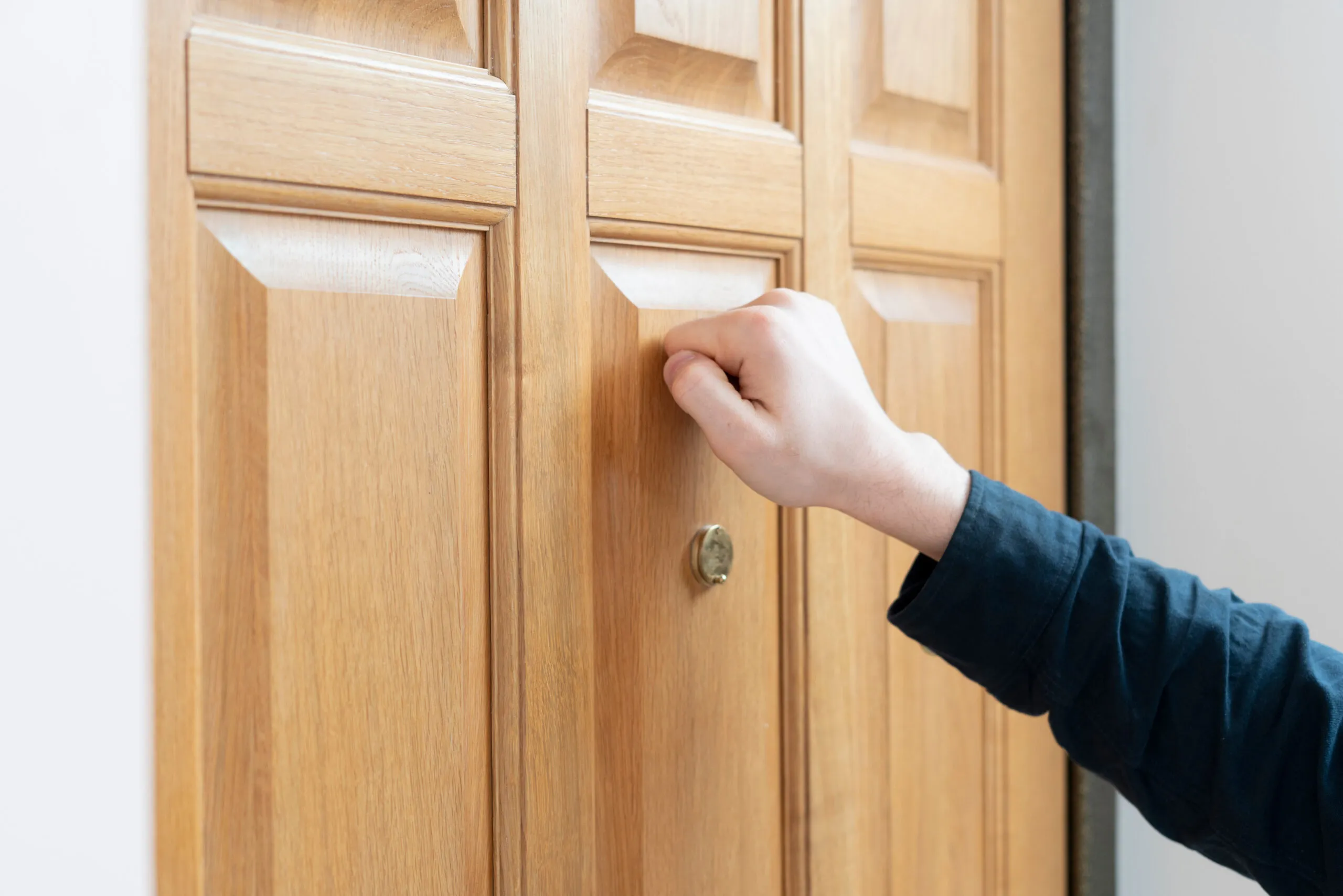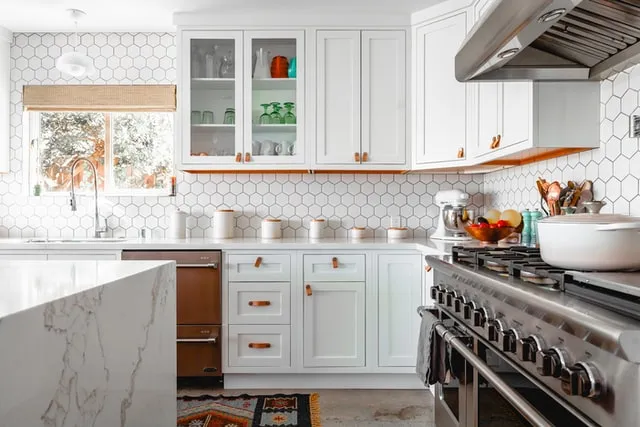Understanding property value is fundamental for success in real estate investing. One key metric, especially for investors focused on renovations, is After Repair Value (ARV). Calculating ARV helps you assess potential profitability before you even make an offer.
This guide will break down what ARV means and how to calculate it accurately for your investment strategies in today's market.
Key takeaways
- ARV is the estimated market value of a property after necessary repairs and renovations are completed.
- Calculating ARV helps investors determine a maximum purchase price and evaluate project profitability.
- Accurate ARV relies heavily on selecting appropriate comparable sales (comps) in the local market.
- Estimating renovation costs precisely is crucial and distinct from the value added by those improvements.
- The 70% Rule is a common guideline linking ARV, repair costs, and maximum offer price.
What is the after-repair value (ARV)?
After Repair Value (ARV) is a term used in real estate to estimate the market value of a property once all planned repairs and renovations are finished. This value reflects what a property could realistically sell for in its current condition after undergoing improvements.
It is a critical metric for investors, particularly those involved in fixing and flipping properties or undertaking significant renovations to increase rental value. ARV provides a target valuation that helps guide purchasing and renovation decisions.
ARV is distinct from the property's current market value, which reflects its worth before any work is done. The difference between the current value and the ARV represents the potential increase in value created by the renovations. This potential increase in value, minus the cost of repairs and other expenses, is the source of an investor's profit. Understanding this distinction is vital for accurate project assessment.
Why ARV matters for real estate investors
ARV serves as a cornerstone metric for evaluating the financial viability of real estate investment projects. It directly influences several key decisions an investor makes. By estimating the final value, investors can determine the maximum price they should pay for a distressed property. This helps prevent overpaying and ensures a potential profit margin.
ARV is also essential for evaluating the overall profitability of a potential project. Comparing the estimated ARV to the total projected costs (purchase price + renovation costs + holding costs + selling costs) provides a clear picture of expected returns.
Lenders, especially those specializing in renovation loans or hard money loans, often use ARV to determine how much they are willing to finance. They base their loan amounts on a percentage of the property's expected value after the improvements.
How to calculate ARV
The basic formula for calculating After Repair Value is straightforward:
Current Property Value + Value of Renovations = ARV.
However, accurately determining the "Value of Renovations" is the most challenging part of this equation. This isn't simply the total cost you spend on repairs and improvements. It represents the increase in market value that those renovations are expected to bring, based on local market data and comparable sales.
Effective renovations add value because they make the property more desirable to future buyers or renters. Analyzing comparable properties that have already undergone similar improvements helps determine how much value your planned renovations are likely to add.
Step-by-step guide to calculating ARV accurately
Calculating ARV requires careful analysis and realistic estimations. Rushing this process or using inaccurate data can lead to significant financial mistakes. Follow these steps for a more accurate ARV calculation.
Step 1: Determine the current property value
Start by assessing the property's current market value in its "as-is" condition. You can get a preliminary idea from online valuation tools or recent nearby sales of similar properties that have not been renovated.
A formal appraisal by a professional appraiser provides the most accurate current market value. This step establishes your starting point before any work begins.
Step 2: Estimate the value added by renovations
This step is crucial and involves understanding which improvements yield the best return in your specific market. Focus on updates that are common selling features or address significant deficiencies, such as kitchen and bathroom remodels, structural repairs, or adding square footage.
The value added by renovations is best estimated by looking at comparable properties that have been recently renovated and sold. Compare their sale price to similar, unrenovated properties to gauge the market's reaction to those improvements.
Consider essential maintenance items and potential issues like wear and tear that renovations might address. Accurate repair cost estimation is necessary for project budgeting, but remember that the value added is based on market perception and comparable sales, not just your expenses.
For long-term rental properties, reducing ongoing costs through strategic upgrades can also add value; exploring tips to reduce rental property maintenance costs can inform your renovation choices.
Proactive maintenance using a property maintenance checklist or an apartment maintenance checklist can also highlight areas needing attention that impact both current value and potential ARV.
Step 3: Analyze comparable sales comps
Comparable sales, or comps, are the backbone of an accurate ARV estimate. These are properties similar to yours that have recently sold in the same or a very nearby neighborhood. Look for properties with comparable size, number of bedrooms/bathrooms, lot size, age, and overall condition after renovation (if applicable). Ideally, comps should have sold within the last three to six months.
Analyzing comps involves comparing their sale prices to your subject property. Adjust for any significant differences, such as upgrades they have that yours will not, or features they lack that yours will have post-renovation. The sales prices of relevant comps provide a realistic ceiling and guide for your property's potential ARV.
Step 4: Estimate repair and renovation costs
While estimating the value added is based on the market, you also need a detailed, accurate budget for the cost of repairs and renovations. Get multiple bids from contractors for major work like roofing, HVAC, plumbing, electrical, and significant remodels.
Create a comprehensive list of all planned tasks, from major overhauls to cosmetic touches like paint and flooring. Don't forget permits, inspections, and potential unforeseen issues.
It is wise to include a contingency fund, typically 10-20% of the estimated repair costs, for unexpected problems that often arise in older properties. This repair cost estimate is subtracted from the expected ARV to determine your potential profit and is a critical component of the 70% rule calculation.
Tracking these costs accurately is essential for project management and requires robust financial tools. Managing expenses effectively is crucial for any landlord or investor.
The ARV calculation example
Let's walk through a hypothetical example to illustrate the ARV calculation. Suppose you are looking at a property currently valued at $200,000 that needs significant work. After researching comps of recently renovated homes in the area, you estimate the property could sell for $350,000 once renovations are complete. Your detailed bids and budget show estimated repair and renovation costs of $100,000 (including a contingency).
Using the basic ARV formula: Current Value ($200,000) + Value of Renovations ($150,000, which is the increase from $200,000 to $350,000) = ARV ($350,000).
The estimated ARV is $350,000.
Remember, the value added ($150,000) is based on market comps, not your $100,000 repair cost.
Your potential gross profit before other expenses (like holding costs, selling costs) would be $350,000 (ARV) - $200,000 (purchase price) - $100,000 (repair costs) = $50,000.
The 70% rule: a standard guideline for investors
The 70% rule is a popular guideline, particularly among fix-and-flip investors, to help determine the maximum price they should pay for a property. This rule suggests that an investor should pay no more than 70% of the After Repair Value (ARV) minus the estimated repair costs. The 30% buffer is intended to cover holding costs, selling costs, and the investor's profit margin. It serves as a quick filtering tool for potential deals.
The formula for the 70% Rule is:
Maximum Purchase Price = (ARV * 0.70) - Repair Costs
Using our previous example with an estimated ARV of $350,000 and repair costs of $100,000: The maximum purchase price according to the 70% rule would be ($350,000 * 0.70) - $100,000. This calculates to $245,000 - $100,000 = $145,000. In this scenario, an investor following the 70% rule would aim to pay no more than $145,000 for the property in its current condition.
It is important to note that the 70% rule is a guideline, not a strict law. The percentage may be adjusted based on market conditions, the investor's desired profit margin, and the specifics of the project. In a very hot market, investors might push this percentage higher, while in a slower market, a more conservative percentage might be necessary.
Factors that influence ARV accuracy
Several factors can impact the accuracy of your ARV estimate. Being aware of these helps mitigate risks. Market conditions are paramount; a rapidly changing market can make recent comps less reliable, potentially affecting the relevance of your 2025 estimate if conditions shift significantly. The quality of your renovations directly impacts the final appeal and actual market value. Using cheap materials or poor workmanship can result in a final value lower than your projection.
The accuracy of your comp selection is also critical. Choosing properties that aren't truly comparable in terms of size, location, or condition post-renovation will skew your ARV estimate.
Finally, unforeseen issues discovered during the renovation process can increase costs and potentially alter the scope of work, impacting both your profit margin and the final value if the planned improvements cannot be fully executed. Thorough initial inspection and budgeting are key.
Limitations and risks of relying on ARV alone
While ARV is a powerful tool, it is important to remember that it is always an estimate. It is not a guaranteed sale price. Market volatility is a significant risk; a downturn after you purchase and renovate a property could mean it sells for less than your calculated ARV.
Over-improving the property for the neighborhood is another common pitfall. Spending excessively on high-end finishes in a moderately priced neighborhood may not yield a dollar-for-dollar return, as the market in that area might not support the increased value.
Relying solely on ARV without considering all other costs can be detrimental. You must factor in holding costs (mortgage payments, utilities, insurance, property taxes during renovation), closing costs on purchase and sale, and selling expenses (real estate agent commissions, title fees).
A thorough financial analysis, incorporating ARV but also all associated expenses, is essential for evaluating a project's true profitability. Property management software can help track income and expenses for long-term holds.
ARV in different investment scenarios
ARV is most commonly discussed in the context of fix-and-flip investments, where the goal is to maximize the sale price after renovation. However, it is also relevant for buy-and-hold investors planning significant renovations to increase rental income and long-term property appreciation.
For landlords, understanding the potential ARV after renovations helps determine if the investment in improvements is justified by higher rents or increased property equity. Whether you're a self-managing landlord or use real estate management software, evaluating the impact of renovations on your asset's value is crucial.
Even investors in specific niches like property management software for Airbnb or those using the best short-term rental property management software can use ARV concepts. Renovations designed to increase appeal and nightly rates in the short-term rental market are also aimed at increasing the property's overall value, impacting its ARV.
Similarly, for investors managing residential leases, ARV can inform decisions about capital expenditures on a property managed, perhaps with the help of the best lease management software or part of a larger portfolio tracked by the best real estate portfolio management software.
Baselane’s bookkeeping features can be invaluable for tracking renovation costs accurately. By categorizing expenses related to each project, you can monitor how your actual costs compare to your estimates, helping refine future ARV calculations and evaluate project profitability. Managing finances for multiple properties undergoing renovations becomes simpler when you can track income and expenses efficiently.
Bottomline
After Repair Value (ARV) is an indispensable tool for real estate investors seeking to uncover profitable opportunities in properties requiring renovation. By providing an estimate of a property's potential future value, ARV helps determine appropriate purchase prices and evaluate project feasibility.
While the basic formula is simple, calculating ARV accurately requires diligence in researching comparable sales and discipline in estimating renovation costs realistically.
ARV is an estimate and should be used in conjunction with thorough market analysis and a comprehensive financial projection of all associated costs. For investors looking to manage the financial complexities of renovation projects and rental properties, tools that streamline income and expense tracking are essential.
Baselane can help you manage the finances associated with your investment properties, from tracking renovation budgets through bookkeeping features to managing rental income post-renovation. Empower your real estate business with clarity and control over your finances.
FAQs
What is ARV in real estate?
ARV stands for After Repair Value. It is the estimated market value of a property after all necessary repairs and renovations have been completed, reflecting its potential selling price in the improved condition.
How is ARV calculated?
ARV is typically calculated as the Current Property Value plus the estimated Value Added by Renovations. The value added is based on comparable sales of similar, recently renovated properties in the area, not just the cost of the repairs.
Why is ARV important for investors?
ARV is crucial because it helps investors determine the maximum price they can afford to pay for a property while leaving room for profit, evaluate the potential profitability of a renovation project, and secure financing from lenders who often use ARV as a basis for loan amounts.
